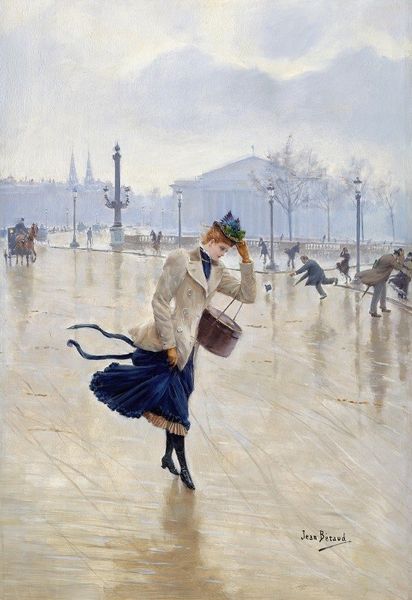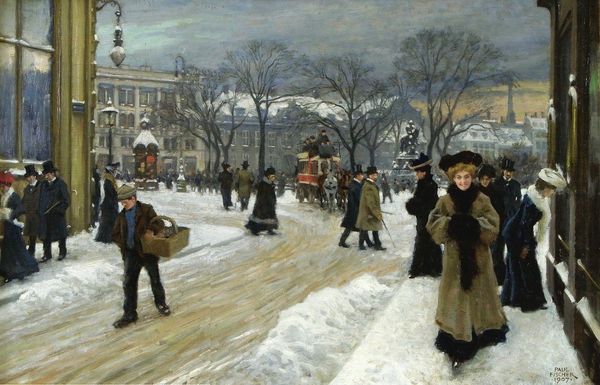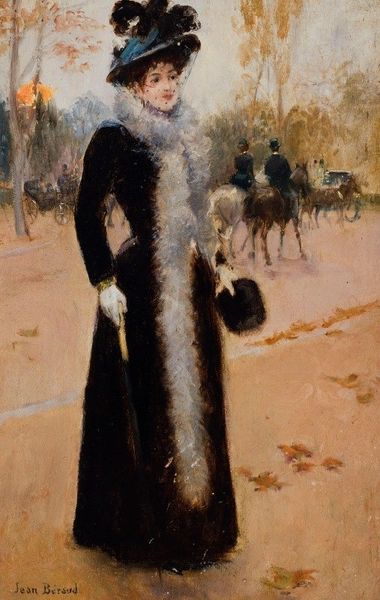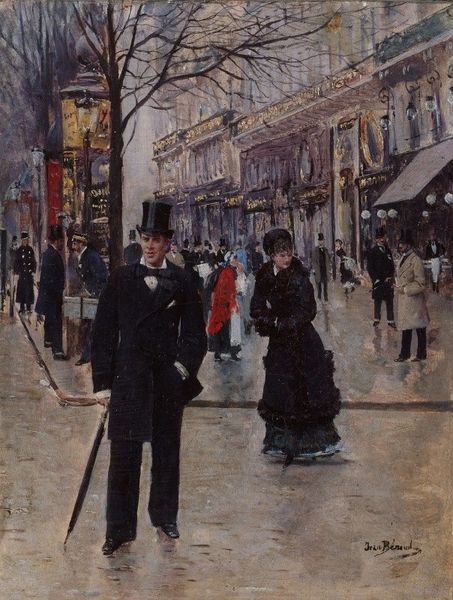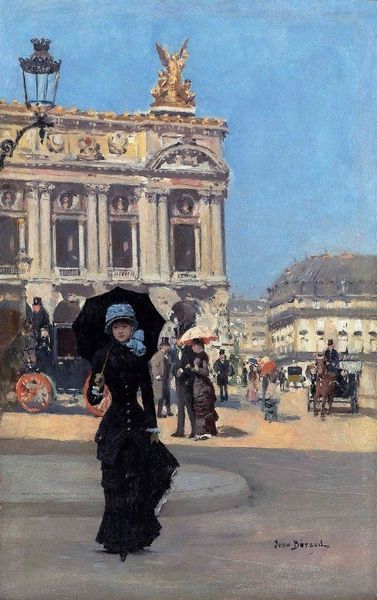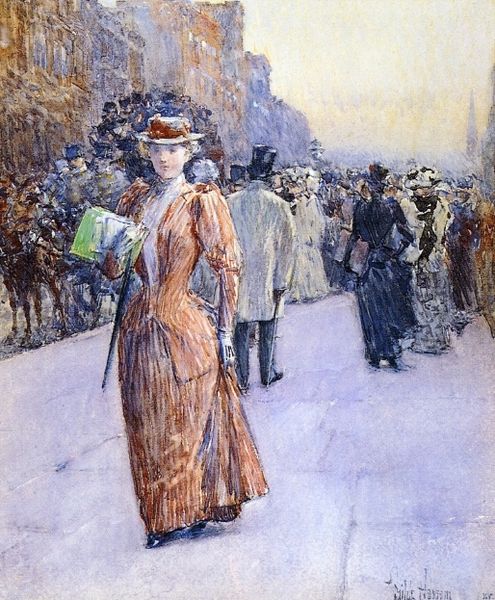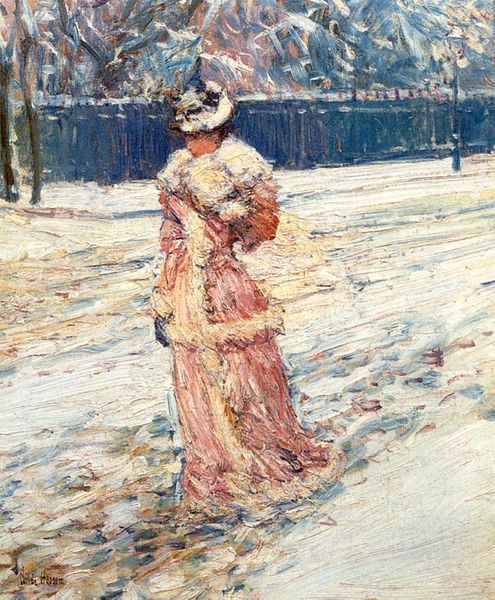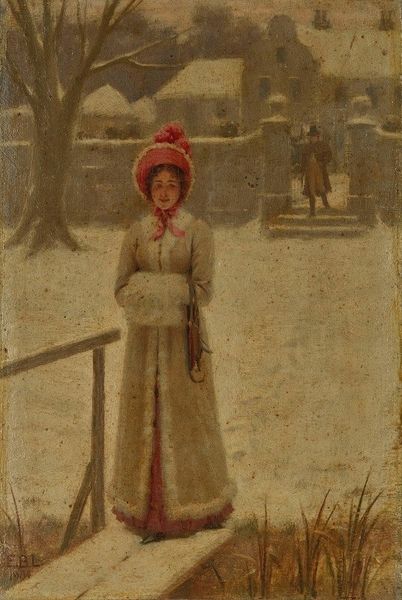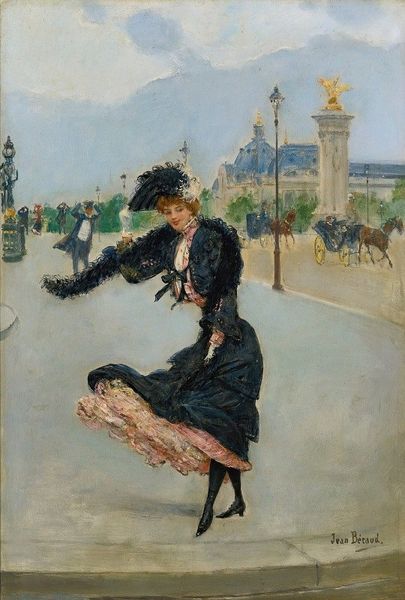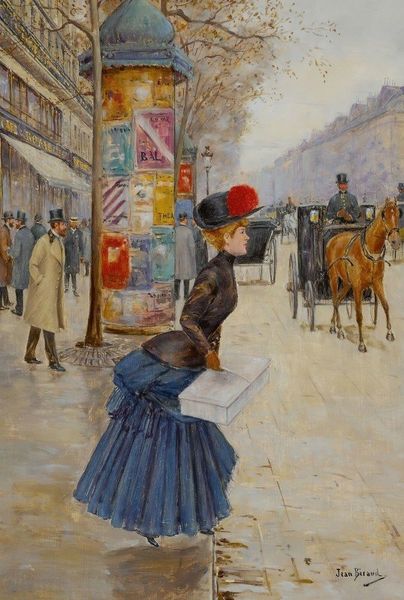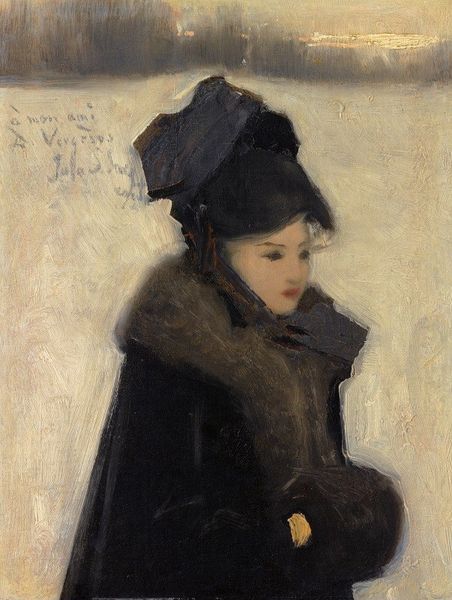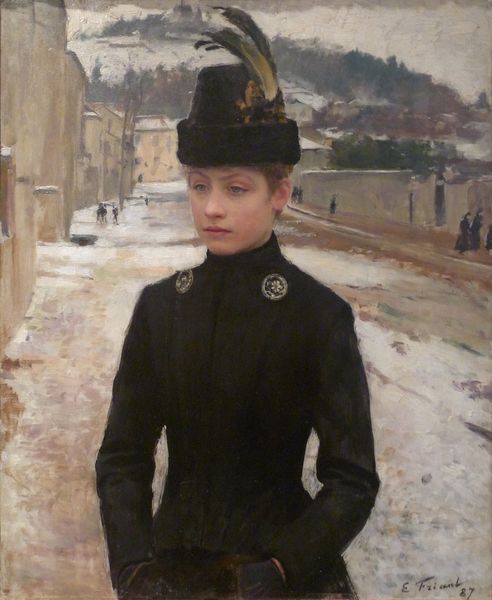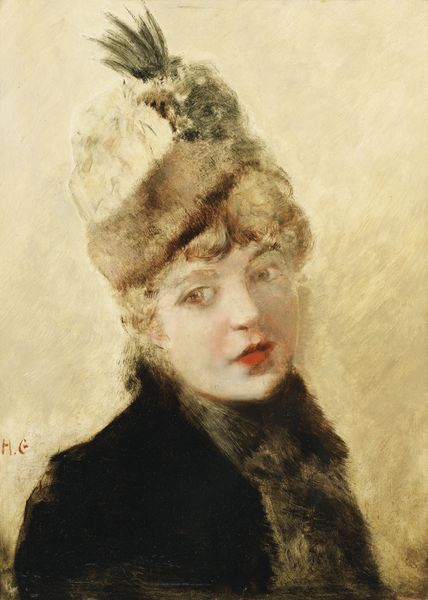
painting, plein-air, oil-paint
#
portrait
#
public art
#
figurative
#
painting
#
impressionism
#
plein-air
#
oil-paint
#
painted
#
figuration
#
underpainting
#
urban art
#
street fashion
#
cityscape
#
genre-painting
Copyright: Public Domain: Artvee
Curator: Today, we’re looking at Jean Béraud’s "Parisienne sur la place de la Concorde," painted in 1885. The artwork rendered in oil paint embodies impressionist aesthetics and shows a woman with a present walking along the streets of Paris. Editor: My first impression is the artist's skilled capture of a crisp, possibly cold, Parisian day. There is a prevailing gray tonality to the painting and this is sharply contrasted by the striking figure in black, poised centrally. She cuts a sophisticated, albeit slightly mournful figure across the scene. Curator: Precisely. Béraud's strength here is his manipulation of light and color. Notice how the limited palette actually enhances the central figure? It directs the viewer's gaze and then encourages it to travel around the city scape and interact with the structural composition and perspective of the setting. Editor: It’s more than visual arrangement though; this woman embodies the rapid social changes of the era. She represents a modern, urban woman navigating a transformed Paris. What does it mean for her to move through the city alone, carrying a gift, in a period marked by both opportunity and oppression for women? I notice that even the city seems to loom up and impose over her figure in a disorienting manner. Curator: An intriguing point. You suggest that the backdrop hints at her potentially compromised situation. Alternatively, consider the meticulous detail in her attire, contrasted against the blurred, indistinct figures in the background. This contrast emphasizes her status and individualism; highlighting how this visual strategy elevates her as a subject of artistic merit. The semiotics here construct and reflect high society values in the Parisienne. Editor: Yet the gaze of this stylish woman directly engages with the viewer; what's on her mind and who is she in relation to other women represented in painting? In light of Baudrillard’s writing, her presence seems highly self-aware; acutely alert to being seen and therefore a symbol for performative feminine identity within the urban arena. Her clothes embody her agency. Curator: A powerful lens through which to view the piece. Ultimately, it demonstrates how Béraud's work, rich in detail and nuance, continues to generate meaningful discourse regarding structure and representation in nineteenth-century art. Editor: Indeed, this artwork gives insights into intersectional discourses around gender, society and location. "Parisienne sur la place de la Concorde" prompts us to see a woman, perhaps compromised, on the cusp of a brand new era.
Comments
No comments
Be the first to comment and join the conversation on the ultimate creative platform.

